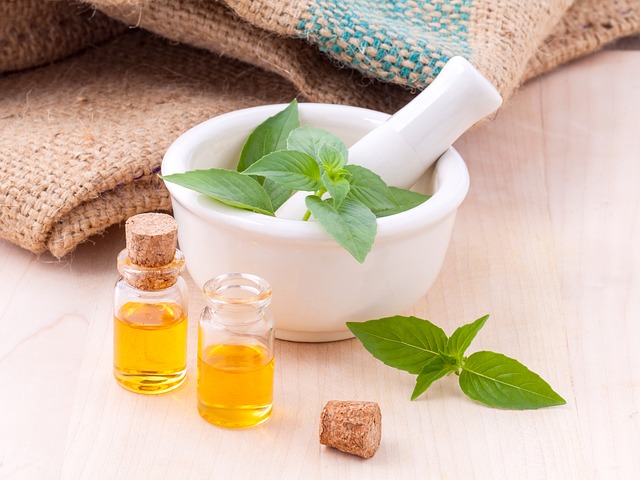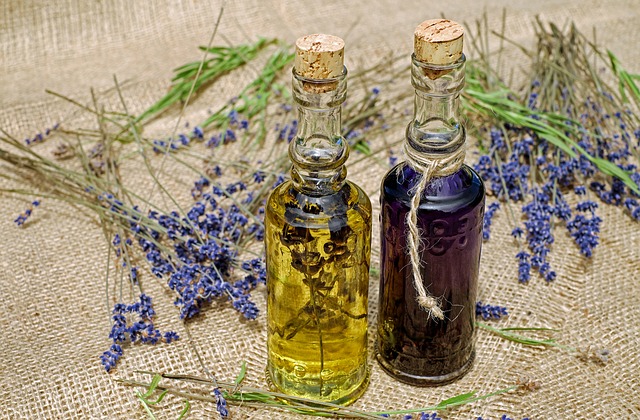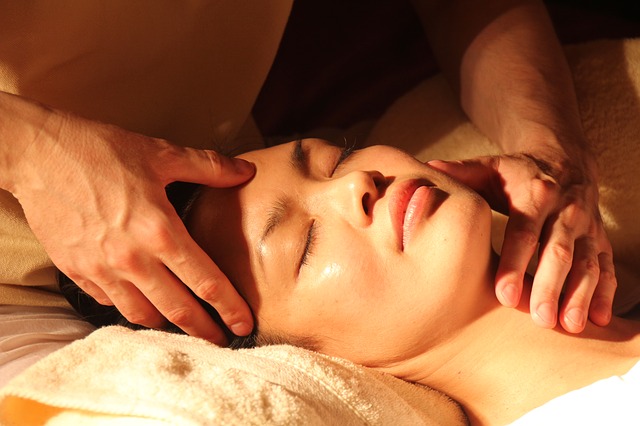Aromatherapy – 100% Natural Treatment for Minor skin irritations

Essential oils and aromatic plants have been used to treat minor ailments since ancient times. Using natural, pure essential oils is an easy and inexpensive way to treat various maladies without fear of adverse side-effects and is therefore ideal for children and adults alike, as well as people with sensitive skin.
Why use pure essential oils?
For as long as humans have walked the earth, natural ingredients have been key for maintaining good health inside and out. For far too long, we have been conditioned to reach for a pill, a cream or a tube of chemicals to help us and the pharmaceutical companies revel at our reliance on their products; but what if we can treat our everyday ailments the natural way? Try a blend of cedarwood and eucalyptus oils as a natural decongestant for a cold or a few drops of geranium and lavender to moisturise dry skin. This certainly seems a lot more appealing, but more importantly, they really work because of their nutritional properties.
How do you know when essential oils are pure?

There are numerous products on the market, but they are not all suitable for medicinal purposes. It is important to read the label carefully as some are synthetic and contain no natural ingredients whatsoever; others are heavily diluted and only contain a small percentage of the original ingredient offering very little therapeutic value. To ensure that you are getting the very best whether it be for topical therapeutic applications or to use in a burner to refresh your home, here are what you should look for on the label:
- A good essential oil will always be in a dark glass bottle. Light can deteriorate the quality of the oil, rendering its efficacy inert. A dark bottle ensures the longevity of the nutrients in the oils.
- The bottle should have an inbuilt dropper at the top to accurately control the amount of oil-drops you are pouring
- It should indicate that it is a ‘pure essential oil’ – not a fragrance eg: Pure Bergamot Oil not Bergamot scented/fragranced oil. It must be the real deal.
- Often it will have the original plant name of the oil – eg: Bergamot Oil – Citrus aurantium fruit peel oil
- Check the concentration of the oil in the bottle eg: 100% Bergamot oil w/w – weight for weight or ‘v/v’ – volume for volume
- There are some oils which are too unstable or potent to use on their own and will be mixed in a base carrier oil, usually a nut oil such as almond oil or jojoba oil. In this instance, the label should indicate this very specifically – eg: Chamomile in Jojoba Oil – Chamomile Oil English 26mg/ml and Simmondsia Chinensis Seed Oil 839mg/ml
- Blended essential oils are good as well, as long as the label states that it is 100% pure
- The nose knows – for example if the oil claims to be 100% orange oil but smells nothing like it, then it is best to avoid it, as the oil may have become rancid or is of poor quality
Various ways of using essential oils

- Medicinal purposes – selecting particular oils to achieve the results you need eg: tea tree for disinfecting wounds or for treating pimples/acne
- Burning in oil burner – adding a few drops of lemon oil, orange oil and bergamot oil will cleanse the air of stagnant smells and refresh the space
- Massage – Massage is an effective method of stimulating blood circulation and aligning muscles. Adding essential oils to a good carrier oil such as jojoba oil will further enhance relaxation and eases away stress
- Steam bath/inhaler – for respiratory troubles, put a few drops of key essential oils, as noted below, in a warm bath or bowl of hot water. The steam will clear the sinuses and relieve catarrh
- Mood enhancer – (Ref1) Research shows that our emotions are strongly related to our olfactory sense. Our moods can be altered simply by introducing a smell which is conducive to the feelings we want to experience eg: citrus smells are uplifting and happy – like the smell of cut oranges or fresh lemons, woody smells such as cedar or cinnamon evoke a feeling of warmth and comfort. Floral smells such as rose, palmarosa and ylang ylang suggest feelings of love and freedom.
Create your ideal environment with smells you love such as grapefruit in the kitchen, rose and lavender in the bedroom, cypress in the office/study, orange and sandalwood in the laundry – try your own combinations.
